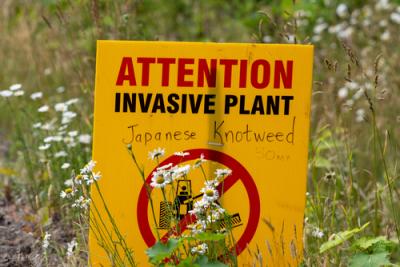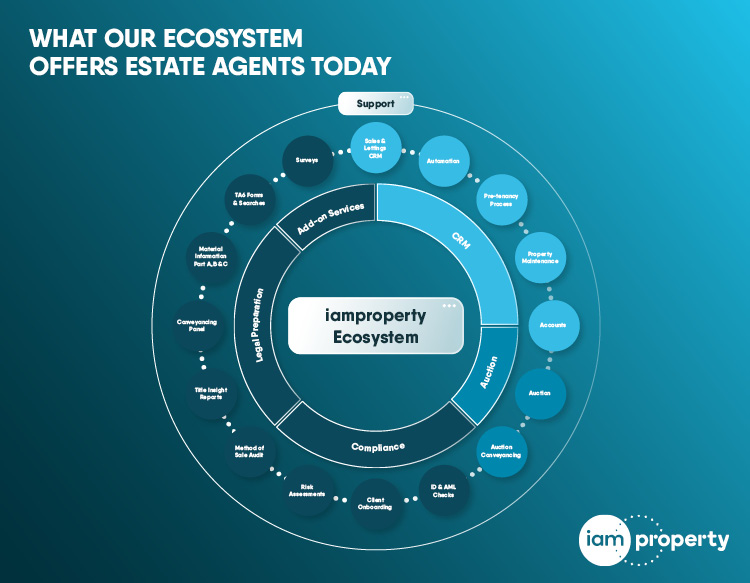Japanese knotweed grows rapidly and has the potential to destroy man-made and natural structures in its path.
It is able to grow through cracks in concrete and undermine the structural integrity of buildings. While homeowners selling their property are legally obliged to declare the presence of knotweed, in some cases they try to conceal it due to the potential financial implications.
Recent research conducted by the Crop Protection Association (CPA) revealed that:
• One in ten people (10%) lost more than £4000 following an infestation;
• One in seven (15%) saw a property deal fall through because of a knotweed infestation;
• One in five (20%) saw the value of their house drop because of the presence of the weed.
Any attempts by sellers not to declare knotweed can cause problems for estate agents if a prospective buyer spots the plant. Moreover, agents are similarly obligated to inform a prospective buyer of knotweed presence, as this may affect their decision to buy the property.
The potential impacts of knotweed on property can make it difficult for estate agents to complete a sale, or can result in a reduced percentage fee if the house sells for a lower value.
However, knotweed can often be a phantom threat – albeit one with real consequences - and this is something you need to be aware of.
One of the biggest knotweed problems confronting agents is the misidentification of the plant. Due to the notoriety of knotweed - and because of the risks it can pose if untreated - people are rightly vigilant, but in many cases this leads to over-cautiousness, and wrongly identifying other, less threatening plants as knotweed.
At every stage of its life cycle, Japanese knotweed can easily be confused with other species, such as Himalayan balsam, bind weed, Russian vine, and bamboo.
The research released by the CPA shows the extent to which people are unable to identify the plant:
• Less than a third (30%) felt confident that they’d be able to recognise knotweed;
• One in six (17%) said they had a good understanding of the plant;
• Over one in four (27%) stated that they knew nothing at all about knotweed.
The financial implications of misidentification can be disastrous. We recently conducted a survey on a property in Oldham, Greater Manchester, after the house was valued as worthless because of a suspected case of knotweed. The plant in question turned out to be Himalayan balsam, and the house went on to sell for the asking price of £130,000.
Given the potential outcome of that scenario, agents should ensure that they themselves know how to identify the plant in the first instance. Throughout the four seasons, knotweed can be identified by the following characteristics:
• Spring – the first signs of knotweed growth are distinctive red and purple shoots:
• Summer – the plant develops an abundance of green leaves, distinctive white flowers which hang in clusters, and a green stem that resembles bamboo with purple speckles:
• Autumn – the leaves begin to wilt and brown:
• Winter – knotweed draws back into its rhizome, whilst the canes lose colour and turn into woody stalks.
In the case of uncertainty as to whether a plant is Japanese knotweed, estate agents are encouraged to consult a professional to gain a second opinion, before continuing with the transaction. This will ensure that any undue consequences are avoided.
If knotweed is present, however, estate agents and homeowners alike should be reassured that it does not necessarily need to affect a sale. If a proper remediation strategy is in place with robust warranties and insurance, the legal guarantees can demonstrate to solicitors and conveyancers that the knotweed issue is under control.
For more information about Japanese knotweed, visit: https://www.japaneseknotweedcontrol.com.
*David Layland is the joint Managing Director of Japanese Knotweed Control Ltd., and is a founding member of the Invasive Non-Native Specialists Association.
**The image accompanying this article was changed on January 22 - the original image used was erroneous and not of Japanese Knotweed.











.png)


.jpg)
.jpg)





%20-%20IMAGE%20Client%20Accounting%20%E2%80%93%20what%20are%20your%20options.jpg)


.png)
.png)
.png)
%20(002).png)






%20(002).jpg)



.png)



Join the conversation
Jump to latest comment and add your reply
The first thing to do with regards to the control and treatment of invasive non native species is correct identification. It looks like the photo in the article is tree of heaven but it definitely ISN'T Japanese knotweed!
The picture is not of Japanese knotweed. Nevertheless, the problem is acute.
Glad to see the photo has been chanaed and yes David it is a real problem.
My company Knotweed Control Swansea Limited deals with it with Swansea being the knotweed capital of the UK due to the sheer biomass in the city.
Mortgage lenders vary greatly in their approach to Japanese knotweed, dealing with them on an on a case by case basis.
However generally they expect a specialist Japanese knotweed company (e.g. a member of the Property Care Association or Invasive Non-Native Specialists Association ) to undertake a report assessing the risks with a management plan & then depending on the risk level, sometimes require Insurance Back Guarantees (IBG) and in extreme cases, refuse to lend completely.
Please login to comment